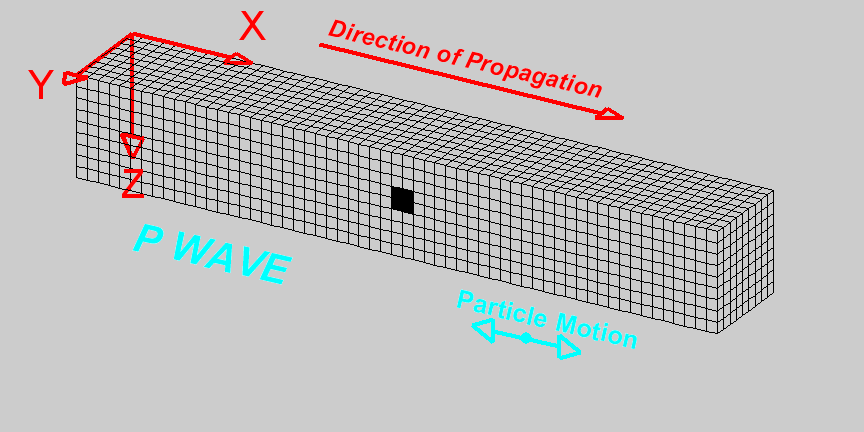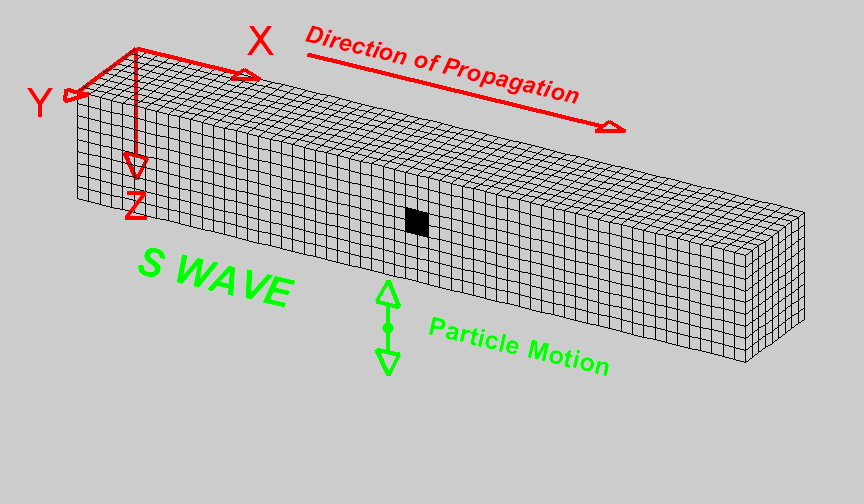Faster, Higher Frequency
Traveling through the interior of the Earth, body waves arrive before the surface waves emitted by an earthquake. These waves are higher frequency than surface waves.
P Waves
The first kind of body wave is the P wave or primary wave. It’s the fastest kind of seismic wave, and the first to arrive at a seismic station. P waves can move through solid rock and fluids, like water or the liquid layers of the Earth. It squishes and stretches the rock it moves through just like sound waves compress and expand the air as they move through it. Have you ever heard a big clap of thunder and heard the windows rattle at the same time? The windows rattle because the sound waves were pushing and pulling on the window glass much like P waves push and pull on rock. Fun fact: Sometimes animals can sense earthquake P waves, while humans might only notice the larger, later-arriving waves S and surface waves.
P waves are also known as compressional waves, because they push and pull. Particles subjected to a P wave move in the same direction that the wave is moves in; it is the direction that the energy is traveling in, sometimes called the “direction of wave propagation.”

S Waves
The second type of body wave is the S wave or secondary wave, and are easy to remember because they’re the second wave to arrive after an earthquake. An S wave is about 1.7 times slower than a P wave. The biggest difference is that S waves can’t move through liquids. Because S waves only move through solids, seismologists were led to conclude that the Earth's outer core is a liquid. S waves move rock particles up and down, or side-to-side, and are always perpendicular to the direction that the wave is traveling in (the direction of wave propagation).

If you'd like to try your hand at making your own P and S waves, try this little experiment.